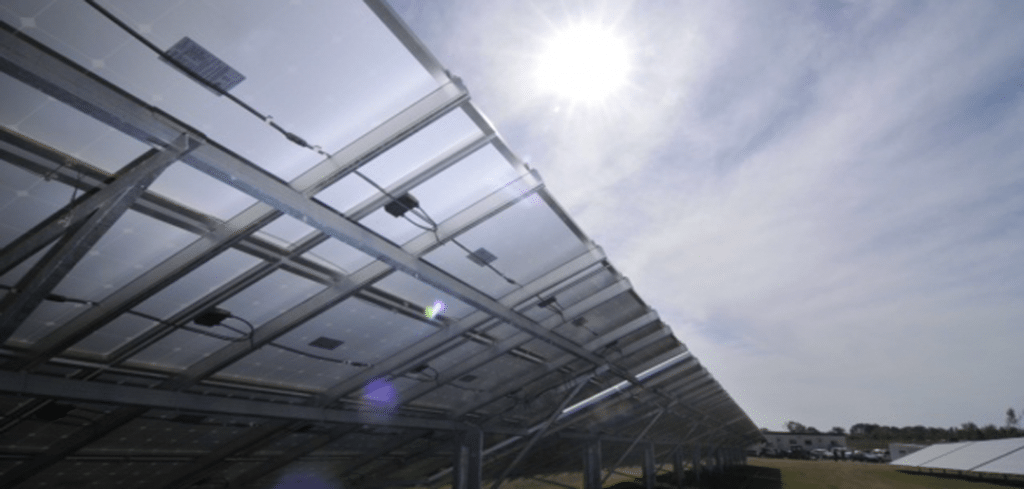For generations, Americans have looked to the skies with a real sense of wonder. From Kill Devil Hills, N.C., all the way to Neil Armstrong’s first step on the moon, it has been the leadership, research, ingenuity and technological advancements of the U.S. that have fueled countless inventions and improvements in our everyday lives brought about by aeronautical innovations. If we put our mind to it, we can do it — right? And you don’t need to fly to the moon to appreciate all these scientific breakthroughs; just say thanks later tonight when you lay your head down on that new memory foam pillow or vacuum up some crumbs with your Dustbuster.
Likewise, the promise of electricity generated by sunlight appeals to the American spirit for many reasons. Perhaps a sense of self-reliance and independence has led a neighbor to research how to use the many available technologies to produce his or her own electricity and go “off the grid.” Others may be intent on reducing the pollution that comes from converting fossil fuels into electricity. But for most, the motivation to harness solar power is an economic choice. The price of solar panels has dropped significantly in the past few years, largely due to the offshoring of virtually all solar manufacturing from Europe and the U.S. to Asia. And sunlight is free, right? So instead of paying for power from your local co-op, installation of solar panels can produce energy without a need to pay for the fuel that utilities convert into electricity.
But many challenges still face the enterprising person who decides to invest in what the industry calls “distributed generation.” There are some basic facts to examine about solar and wind, the predominant sources of renewable energy. First, no matter where you live, it is dark at night, clouds and storms reduce the amount of time the sun is shining during the day and the wind only blows when it wants to. This problem is called intermittency of availability, and it’s a problem because your need for electricity is not confined to just the hours of the day that the sun is shining or the wind is blowing. Our modern lifestyle demands energy 24 hours a day, seven days a week.
Second, the amount of power that can be harnessed from the sun or the wind is different depending upon where you live. For instance, a rooftop in the Southwest desert sees much more intense sunlight than a valley on the eastern side of a mountain. Therefore, a solar panel or wind turbine placed in any fixed location will produce a varying amount of energy throughout the day based upon the changing environmental conditions. In other words, when the wind blows hard, you get more electricity than when there’s just a gentle breeze. These problems are called intermittency of production, where the amount of electricity varies through a fixed period of time based upon a factor that can’t be controlled. And this is a problem because the average home uses the most power during the periods of the day (morning and evening) when wind and solar generation are least productive.
But there is a solution to intermittency. What if we could store the energy produced by our solar panels and wind turbines when we don’t need it and use the power later when we do need it? Seems simple enough. There are battery systems designed to do just this, and technological innovations in lithium-ion technology are improving their performance each day. A prominent California-based company just released a new product that will provide energy storage for residential users at a price that was previously thought to be unachievable.
So, is the future here and available today? As a colleague of mine stated recently, “Sunlight may be free, but solar power is not.”
Even at the lower costs that today’s technological innovations are providing, the economics of energy storage still aren’t practical for all but the wealthiest among us. The new product on the market promises a 7-kilowatt-hour battery (after converting direct current to alternating current, 6 kWh is more realistic) optimized to be cycled every day, warrantied for 10 years and available at an installed cost of approximately $5,000. According to the company’s website, this is enough power to run your refrigerator for one day and keep the lights on in two of your rooms for five hours.
Therefore, the cost just to store and then discharge power through the battery would be about $1.40 each day. This omits the additional cost of purchasing the power that originally charged the battery if it’s not connected to a solar array (and completely ignores the cost of installed solar panels if you charge the battery yourself). Since the average retail rate for electricity in Tennessee is 10 cents per kWh, the same consumption of energy directly from the grid would cost 60 cents.
While this analysis is admittedly simplistic, it does demonstrate that the technology has a long way to go. At more than double the cost of grid power, battery backup is still a luxury item here in Tennessee. But much like anything else, if more battery systems are produced, the cost per system is likely to come down. Perhaps in the future the economics will even out, but I don’t think that future is here just yet. But we are the country that sent a man to the moon, yes?



